Blog
Tricks to Keep you Feet Pain Free when Wearing High Heels
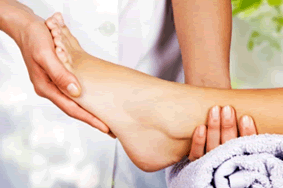 Everyone knows about some of the pain and hardships associated with wearing high heels, especially on a regular basis. However, according to Angie Benji from The Star, there are a bunch of different tricks that can be used to alleviate the pain and discomfort, which she breaks down into three main categories: feet adhesive tricks, preventative tricks, and professional tricks. Combining all these different tricks can really help make your feet feel better after wearing high heels.
Everyone knows about some of the pain and hardships associated with wearing high heels, especially on a regular basis. However, according to Angie Benji from The Star, there are a bunch of different tricks that can be used to alleviate the pain and discomfort, which she breaks down into three main categories: feet adhesive tricks, preventative tricks, and professional tricks. Combining all these different tricks can really help make your feet feel better after wearing high heels.
High heels have a history for causing foot and ankle problems. If you have any concerns about your feet contact one of our podiatrists of University Foot and Ankle Center of New Jersey. Our doctors will treat your foot and ankle needs.
Effects of High Heels on the Feet
High heels are popular shoes among women because they are associated with femininity. Despite their appeal, they can cause many health problems if worn too frequently.
What parts my body will be affected by high heels?
- Ankle Joints
- Achilles Tendon – may shorten and stiffen with prolonged wear
- Balls of the Feet
- Knees – heels cause the knees to bend constantly, creating stress on them
- Back – they decrease the spine’s ability to absorb shock, which may lead to back pain. Also, the vertebrae of the lower back may compress.
What kinds of foot problems can develop from wearing high heels?
- Corns
- Calluses
- Hammertoe
- Bunions
- Morton’s Neuroma
- Plantar Fasciitis
How can I still wear high heels and maintain foot health?
If you want to wear high heeled shoes, make sure that you are not wearing them every day, as this will help prevent long term physical problems. Try wearing thicker heels as opposed to stilettos to distribute weight more evenly across the feet. Always make sure you are wearing the proper shoes for the right occasion, such as sneakers for exercising. If you walk to work, try carrying your heels with you and changing into them once you arrive at work. Adding inserts to your heels can help cushion your feet and absorb shock; you can buy either full inserts or metatarsal pads.
If you have any questions please feel free to contact our offices located in East Brunswick and Monroe Township, NJ. We offer the newest diagnostic tools and technology to treat your foot and ankle needs.
Blisters Increase When Training Increases for Runners
 For runners, increased training can lead to a higher probability of injury or foot ailments including blisters on the feet. Blisters occur during running when there is concentrated pressure to one area causing a buildup of fluid that results in painful blisters. Most often the cause of blisters comes from increasing pace or wetting the feet from sweat or other forms of moisture. There are methods to prevent a blister, but if one arises regardless, keep the area clean and covered to prevent infection.
For runners, increased training can lead to a higher probability of injury or foot ailments including blisters on the feet. Blisters occur during running when there is concentrated pressure to one area causing a buildup of fluid that results in painful blisters. Most often the cause of blisters comes from increasing pace or wetting the feet from sweat or other forms of moisture. There are methods to prevent a blister, but if one arises regardless, keep the area clean and covered to prevent infection.
Blisters are prone to making everyday activities extremely uncomfortable. If you have any concerns with blisters on your feet contact one of our podiatrists of University Foot and Ankle Center, LLC. Our doctors will treat your foot and ankle needs.
Foot Blisters
Foot blisters develop as a result of constantly wearing tight or ill-fitting footwear. This happens due to the constant rubbing from the shoe, which can often lead to pain.
What are Foot Blisters?
A foot blister is a small fluid-filled pocket that forms on the upper-most layer of the skin. Blisters are filled with clear fluid and can lead to blood drainage or pus if the area becomes infected.
How do Blisters Form?
Blisters on the feet are often the result of constant friction of skin and material, usually by shoe rubbing. Walking in sandals, boots, or shoes that don’t fit properly for long periods of time can result in a blister. Having consistent foot moisture and humidity can easily lead to blister formation.
Prevention & Treatment
It is important to properly care for the affected area in order to prevent infection and ease the pain. Do not lance the blister and use a Band-Aid to provide pain relief. Also, be sure to keep your feet dry and wear proper fitting shoes. If you see blood or pus in a blister, seek assistance from a doctor.
If you have any questions please feel free to contact our offices located in East Brunswick and Monroe Township, NJ. We offer the newest diagnostic tools and technology to treat your foot and ankle needs.
Chinese Woman Recalls having Bound Feet to Avoid Flat Feet
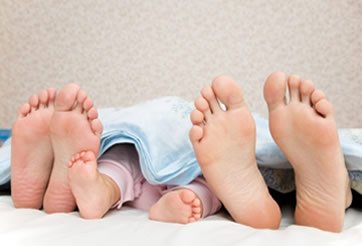 An 84-year-old Chinese woman recounts how her feet were bound when she was just six years old in order to avoid “big, flat feet”. She says the painful process began when she was about six and caused her excruciating pain, especially at night, before they were loosened up. The practice of foot binding had been outlawed but even decades later, it still occurred.
An 84-year-old Chinese woman recounts how her feet were bound when she was just six years old in order to avoid “big, flat feet”. She says the painful process began when she was about six and caused her excruciating pain, especially at night, before they were loosened up. The practice of foot binding had been outlawed but even decades later, it still occurred.
Most arches will develop in children after a certain age. If you suspect that your child has the condition, speak to one of our podiatrists of University Foot and Ankle Center, LLC. Our doctors will answer any of your foot and ankle related questions and attend to all of your podiatric needs.
What are Flat Feet?
Flat feet are a condition in which the arch of the foot is depressed and the sole of the foot is almost completely in contact with the ground. Standing about 20-30% of the population generally has flat feet because their arch never formed during growth.
Conditions & Problems:
Having flat feet makes it difficult to run or walk because of the stress placed on the ankles.
Alignment – The general alignment of your legs can be disrupted, because the ankles move inward which can cause major discomfort.
Knees – if you have complications with your knees, flat feet can be a contributor to arthritis in that area.
Symptoms:
Pain around the heel or arch area
Trouble standing on the tip toe.
Swelling around the inside of the ankle.
Flat look to one or both feet.
Having your shoes feel uneven when worn
Treatment:
If you are experiencing pain and stress on the foot you may weaken the posterior tibial tendon, which runs around the inside of the ankle.
If you have any questions please feel free to contact our offices located in East Brunswick and Monroe Township, NJ. We offer the newest diagnostic tools and treatments for your foot and ankle needs.
Katrina Bradford Wins Golf Match despite Broken Toe
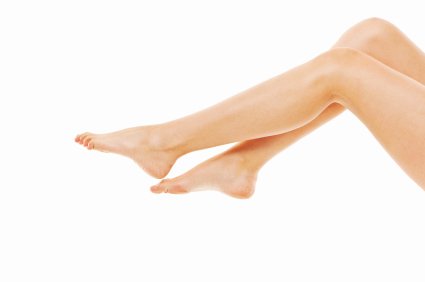 Women’s golfer, Katrina Bradford, suffered a broken toe yet still participated in the team golf event with teammates Fiona Cummins and Helen Stewart. Despite the broken toe, Bradford's team still won by the smallest margin. With the Walker Cup and Solheim Cup coming, this win was exactly what the team was waiting for. Although Bradford did not let her broken toe hold the team back, Fiona was the real star of the event, making moves that made the competition very easy for her team members.
Women’s golfer, Katrina Bradford, suffered a broken toe yet still participated in the team golf event with teammates Fiona Cummins and Helen Stewart. Despite the broken toe, Bradford's team still won by the smallest margin. With the Walker Cup and Solheim Cup coming, this win was exactly what the team was waiting for. Although Bradford did not let her broken toe hold the team back, Fiona was the real star of the event, making moves that made the competition very easy for her team members.
A broken toe can be very painful and lead to complications if not properly fixed. If you have any concerns contact one of our podiatrists of University Foot and Ankle Center. Our doctors will treat your foot and ankle needs.
What to Know About a Broken Toe
Although most people try to avoid foot trauma such as banging, stubbing, or dropping heavy objects on their feet, the unfortunate fact is that it is a common occurrence. Given the fact that toes are positioned in front of the feet, they typically sustain the brunt of such trauma. When trauma occurs to a toe, the result can be a painful break (fracture).
Symptoms of a Broken Toe
- throbbing pain
- swelling
- bruising on the skin and toenail
- the inability to move the toe
- toe appears crooked or disfigured
- tingling or numbness in the toe
Generally, it is best to stay off of the injured toe with the affected foot elevated.
Severe toe fractures may be treated with a splint, cast, and in some cases, minor surgery. Due to its position and the pressure it endures with daily activity, future complications can occur if the big toe is not properly treated.
If you have any concerns please feel free to contact our offices located in East Brunswick and Monroe Township, NJ. We offer the newest diagnostic tools and technology to treat your foot and ankle needs.
Pregnant Woman Treated Poorly By Fellow Passenger on Train
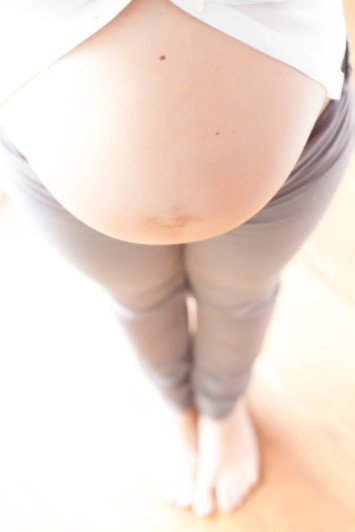 Mhari-Claire Doolan had boarded a train to Manchester in late August when she found a businessman sitting in a seat she had already reserved. Doolan is 34 weeks pregnant with her first child. “I told him I had that seat booked and positioned myself so that he could see I was pregnant but he just ignored me,” she shared. “My back ached, my feet ached and I felt sick. I was in a lot of pain but luckily a seat eventually came free.” A spokesman for the train company stated, “We would expect our customers to be polite and courteous to their fellow passengers and are disappointed to learn of her experience during her journey with us.”
Mhari-Claire Doolan had boarded a train to Manchester in late August when she found a businessman sitting in a seat she had already reserved. Doolan is 34 weeks pregnant with her first child. “I told him I had that seat booked and positioned myself so that he could see I was pregnant but he just ignored me,” she shared. “My back ached, my feet ached and I felt sick. I was in a lot of pain but luckily a seat eventually came free.” A spokesman for the train company stated, “We would expect our customers to be polite and courteous to their fellow passengers and are disappointed to learn of her experience during her journey with us.”
Pregnant women are susceptible to aching and swollen feet and should be treated with care. For more information about other cures for swollen feet during pregnancy, speak to one of our podiatrists of University Foot and Ankle Center, LLC. Our doctors will assist you with all of your foot and ankle concerns and answer any of your related questions.
What foot problems can arise during pregnancy?
One problem that can occur is over-pronation, which occurs when the arch of the foot flattens and tends to roll inward. This can cause pain and discomfort in your heels while you’re walking or even just standing up, trying to support your baby.
Another problem is edema, or swelling in the extremities. This often affects the feet during pregnancy, but tends to occur in the later stages.
How can I keep my feet healthy during pregnancy?
- Wearing orthotics can provide extra support for the feet and help distribute weight evenly
- Minimize the amount of time spent walking barefoot
- Wear shoes with good arch support
- Wear shoes that allow for good circulation to the feet
- Elevate feet if you experience swelling
- Massage your feet
- Get regular, light exercise, such as walking, to promote blood circulation to the feet
If you have any questions, please contact our offices located in East Brunswick and Monroe Township, NJ. We offer the newest diagnostic and treatment technologies for all your foot care needs.
Diabetic Patients Should Check Their Own Feet Twice a Day
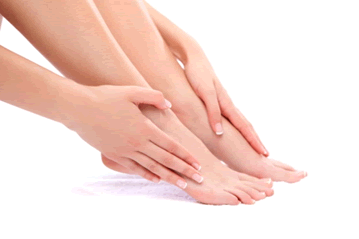 Robert P. Thompson, executive director of non-profit Institute of Preventative Foot Health recently spoke at the American Association of Diabetics Ecuador Annual Meeting 2015 where he stressed the importance of diabetic foot checkups. Thompson stated that medical professionals should do routine checkups on diabetic feet every visit and patients suffering from diabetes should keep an eye on their own feet twice a day. Regular foot checks are a major component of diabetes management where reducing the odds of neuropathy, inability to feel pain, slow wound healing, infection, ulcers, and amputation are reduced.
Robert P. Thompson, executive director of non-profit Institute of Preventative Foot Health recently spoke at the American Association of Diabetics Ecuador Annual Meeting 2015 where he stressed the importance of diabetic foot checkups. Thompson stated that medical professionals should do routine checkups on diabetic feet every visit and patients suffering from diabetes should keep an eye on their own feet twice a day. Regular foot checks are a major component of diabetes management where reducing the odds of neuropathy, inability to feel pain, slow wound healing, infection, ulcers, and amputation are reduced.
If you are suffering from diabetes or have any other concerns about your feet, contact one of our podiatrists of University Foot and Ankle Center, LLC. Our doctors will diagnose and treat your foot and ankle needs.
Diabetic Foot Care
Diabetes affects millions of people every year. Diabetes can damage blood vessels in many parts of the body, including the feet. Because of this, taking care of your feet is essential if you have diabetes, and having a podiatrist help monitor your foot health is highly recommended.
The Importance of Caring for Your Feet
- Routinely inspect your feet for bruises or sores.
- Wear socks that fit your feet comfortably.
- Wear comfortable shoes that provide adequate support.
Patients with diabetes should have their doctor monitor their blood levels because blood sugar levels play such a huge role in diabetic care. Monitoring these levels on a regular basis is highly advised.
It is always best to inform your healthcare professional of any concerns you may have regarding your feet, especially for diabetic patients. Early treatment and routine foot examinations are keys to maintaining proper health, especially because severe complications can arise if proper treatment is not applied.
If you have any questions, please feel free to contact our offices in East Brunswick and Monroe Township, NJ.
. We offer the newest diagnostic and treatment technologies for all your foot and ankle needs.
Proper Form in Barefoot Running is Important in Preventing Injury
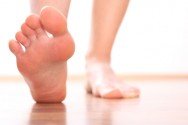 While barefoot running can do wonders for your body, maintaining proper form is essential in preventing injury during this high intensity activity. Since you are not wearing shoes during a barefoot run, the strain on the Achilles tendon and calves are more extreme and the impact can be nearly seven times harder on the foot if you strike with the heels. Transitioning into barefoot running too quickly can result in problems such as plantar fasciitis. This, along with studies suggesting that barefoot running can deform the heels, can all be prevented with proper form and other changes. Learning how to land mid-foot can help reduce the tension on the heels. In order to change your foot strike, try quieting the sound of your feet on the treadmill by straightening your posture and shortening your stride. For marathon runners, try to switch it up by landing forefoot as a training aid. It is important to avoid overdoing the practice for the sake of your foot health.
While barefoot running can do wonders for your body, maintaining proper form is essential in preventing injury during this high intensity activity. Since you are not wearing shoes during a barefoot run, the strain on the Achilles tendon and calves are more extreme and the impact can be nearly seven times harder on the foot if you strike with the heels. Transitioning into barefoot running too quickly can result in problems such as plantar fasciitis. This, along with studies suggesting that barefoot running can deform the heels, can all be prevented with proper form and other changes. Learning how to land mid-foot can help reduce the tension on the heels. In order to change your foot strike, try quieting the sound of your feet on the treadmill by straightening your posture and shortening your stride. For marathon runners, try to switch it up by landing forefoot as a training aid. It is important to avoid overdoing the practice for the sake of your foot health.
Barefoot running has its own share of benefits and disadvantages. To learn more about this trend, consider speaking to one of our podiatrists of University Foot and Ankle Center, LLC. Our doctors will explain the facts of barefoot running and help you decide if it’s a practice you’d like to take up.
Barefoot Running
The Impact of Barefoot Running
-Running without shoes changes the motion of your running, as most running is done by landing on the heel of the feet.
-Running barefoot requires a different way of running; the landing is done on the front part of the feet.
The Advantages of Barefoot Running
-When running and landing on the front feet, the impact on the feet and ankle is reduced, this can reduce stress injuries.
-It strengthens muscles in the feet and ankles and the lower legs.
-Balance of the body is improved and there is a greater sensory input from the feet to the rest of the body.
The Drawbacks of Barefoot Running
-No protection while running, makes it likely that runners will land on sharp objects and scrapes, bruises and cuts on the feet will result.
-Blisters may form.
-Possibility of plantar fascia problems.
-Risk of getting Achilles tendonitis.
So what can runners do to make barefoot running safe? It’s best to make a slow transition from running shoes to barefoot running. Once the feet begin to adjust, try walking, then jogging and gradually increasing the distance. Minimalist running shoes may also be an option.
If you have any questions, please contact our offices located in East Brunswick and Monroe Township, NJ. We offer the newest diagnostic and treatment technologies for all your foot care needs.
Brigham Young University Loses Taysom Hill to Surgery
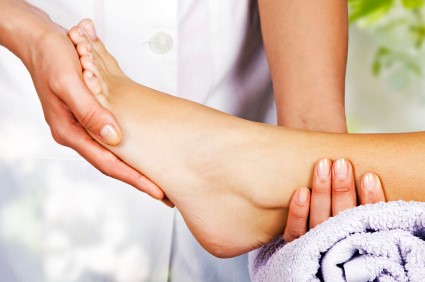 Taysom Hill of Brigham Young University recently announced through Twitter that he will soon be undergoing surgery for his recently injured foot. The quarterback will be having surgery to repair a Lis franc sprain in his foot. The announcement ended speculation on the severity of Hill’s injury. Regardless, Hill appears to be in high spirits. “Thank you cougar nation and all those who have sent their well wishes and prayers!” shared Hill on Twitter. “The first step to recover starts tomorrow with surgery!”
Taysom Hill of Brigham Young University recently announced through Twitter that he will soon be undergoing surgery for his recently injured foot. The quarterback will be having surgery to repair a Lis franc sprain in his foot. The announcement ended speculation on the severity of Hill’s injury. Regardless, Hill appears to be in high spirits. “Thank you cougar nation and all those who have sent their well wishes and prayers!” shared Hill on Twitter. “The first step to recover starts tomorrow with surgery!”
Foot surgery is sometimes necessary to fix a foot ailment. If you have any concerns about your foot and ankle needs contact one of our podiatrists of University Foot and Ankle Center, LLC. Our doctors will treat your foot and ankle needs.
When Is Surgery Necessary?
Foot and ankle surgery is generally reserved for cases in which less invasive, conservative procedures have failed to help with the problem. Some of the cases in which surgery may be necessary are:
- Removing foot deformities like bone spurs and bunions
- Severe arthritis that has caused bone issues
- Cosmetic reconstruction
- Bunionectomy for painful bunions
- Surgical fusion for realignment of bones
- Neuropathy decompression surgery to treat nerve damage
What Types of Surgery Are There?
The type of surgery you receive will depend on the nature of the problem you have. Some of the possible surgeries include:
Benefits of Surgery
Although surgery is usually a last resort, it can provide more complete pain relief compared to non-surgical methods and may allow you to finally resume full activity.
Surgical techniques have also become increasingly sophisticated. Techniques like endoscopic surgery allow for smaller incisions and faster recovery times.
If you have any questions please feel free to contact our offices located in East Brunswick and Monroe Township, NJ. We offer the newest diagnostic tools and technology to treat your foot and ankle needs.
Horseback Rider Michael Jung Still Wins Competition with Broken Ankle
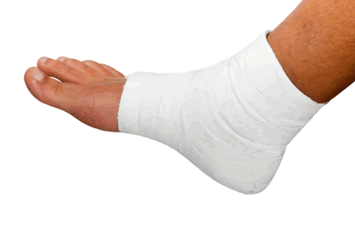 German horseback rider, Michael Jung, won the Longines FEI European Championship despite having a broken ankle. Although Jung attempted to make the injury seem less serious than it was, he was seen riding a Segway around the competition at Blair Castle while his groom brought his horse, FischerTakinou, to and from the competition. While falling off his first horse, FischerRocana, earlier in the month, Jung broke a bone just above his ankle, leaving him with two screws. Despite the injury, Jung was able to make a comeback with FischerTakinou..
German horseback rider, Michael Jung, won the Longines FEI European Championship despite having a broken ankle. Although Jung attempted to make the injury seem less serious than it was, he was seen riding a Segway around the competition at Blair Castle while his groom brought his horse, FischerTakinou, to and from the competition. While falling off his first horse, FischerRocana, earlier in the month, Jung broke a bone just above his ankle, leaving him with two screws. Despite the injury, Jung was able to make a comeback with FischerTakinou..
Broken ankles need immediate treatment. If you have any concerns about your feet and ankles contact one of our podiatrists of University Foot and Ankle Center, LLC. Our doctors will treat your foot and ankle needs.
Broken Ankles
A broken ankle is experienced when a person fractures their tibia or fibula in the lower leg and ankle area. Both of these bones are attached at the bottom of the leg and combine to form what we know to be our ankle.
When a physician is referring to a break of the ankle, he or she is usually referring to a break in the area where the tibia and fibula are joined to create our ankle joint. Ankles are more prone to fractures because the ankle is an area that suffers a lot of pressure and stress. There are some obvious signs when a person experiences a fractured ankle, and the following symptoms may be present.
Symptoms of a Fractured Ankle
- Excessive pain when the area is touched or when any pressure is placed on the ankle
- Swelling around the area
- Bruising of the area
- Area appears to be deformed
If you suspect an ankle fracture, it is recommended to seek treatment as soon as possible. The sooner you have your podiatrist diagnose the fracture, the quicker you’ll be on the way towards recovery.
If you have any questions please feel free to contact our offices located in East Brunswick and Monroe Township, NJ. We offer the newest diagnostic tools and technology to treat your foot and ankle needs.
Pedicurists Cannot Act as Your Podiatrist for Foot Problems such as Plantar Warts
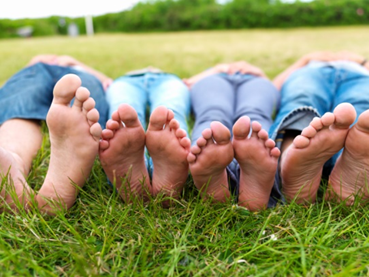 While most people get pedicures to wind down and relax, pedicurists want some of their customers to know a few things they should and should not expect from the process. While pedicurists will take care of your feet by removing dead skin and calluses, somethings they just cannot take care of. For example, plantar warts, ingrown toenails, and fungal should not be taken care of at home or at a nail salon, they should be taken care of by a podiatrist. “A podiatrist is qualified to take care of the problem as quickly as and pain-free as possible,” says pedicurist Alexandra Calle.
While most people get pedicures to wind down and relax, pedicurists want some of their customers to know a few things they should and should not expect from the process. While pedicurists will take care of your feet by removing dead skin and calluses, somethings they just cannot take care of. For example, plantar warts, ingrown toenails, and fungal should not be taken care of at home or at a nail salon, they should be taken care of by a podiatrist. “A podiatrist is qualified to take care of the problem as quickly as and pain-free as possible,” says pedicurist Alexandra Calle.
Plantar warts can be very uncomfortable. If you have any concerns with plantar warts on your feet contact one of our podiatrists of University Foot and Ankle Center, LLC. Our doctors will treat your foot and ankle needs.
About Plantar Warts
Plantar warts are the result of HPV, or human papillomavirus, getting into open wounds on the feet. They are mostly found on the heels or balls of the feet.
While plantar warts are generally harmless, those experiencing excessive pain or those suffering from diabetes or a compromised immune system require immediate medical care. Plantar warts are easily diagnosed, usually through scraping off a bit of rough skin or by getting a biopsy.
Symptoms
- Legions on the bottom of your feet, usually rough and grainy
- Hard or thick callused spots
- Wart seeds, which are small clotted blood vessels that look like little black spots
- Pain, discomfort, or tenderness of your feet when walking or standing
- Freezing
- Electric tool removal
- Laser Treatment
- Topical Creams (prescription only)
- Over-the-counter medications
Treatment
To help prevent developing plantar warts, avoid walking barefoot over abrasive surfaces that can cause cuts or wounds for HPV to get into. Avoiding direct contact with other warts, as well as not picking or rubbing existing warts, will help prevent the further spread of plantar warts. However, if you think you have developed plantar warts, speak to your podiatrist. He or she can diagnose the warts on your feet and recommend the appropriate treatment options.
If you have any questions please feel free to contact our offices located in East Brunswick and Monroe Township, NJ. We offer the newest diagnostic tools and technology to treat your foot and ankle needs.
Blog Archives
- May 2024
- April 2024
- March 2024
- February 2024
- January 2024
- December 2023
- November 2023
- October 2023
- September 2023
- August 2023
- July 2023
- June 2023
- May 2023
- April 2023
- March 2023
- February 2023
- January 2023
- December 2022
- November 2022
- October 2022
- September 2022
- August 2022
- July 2022
- June 2022
- May 2022
- April 2022
- March 2022
- February 2022
- January 2022
- December 2021
- November 2021
- October 2021
- September 2021
- August 2021
- July 2021
- June 2021
- May 2021
- April 2021
- March 2021
- February 2021
- January 2021
- December 2020
- November 2020
- October 2020
- September 2020
- August 2020
- July 2020
- June 2020
- May 2020
- April 2020
- March 2020
- February 2020
- January 2020
- December 2019
- November 2019
- October 2019
- September 2019
- August 2019
- July 2019
- June 2019
- May 2019
- April 2019
- March 2019
- February 2019
- January 2019
- December 2018
- November 2018
- October 2018
- September 2018
- August 2018
- July 2018
- June 2018
- May 2018
- April 2018
- March 2018
- February 2018
- January 2018
- December 2017
- November 2017
- October 2017
- September 2017
- August 2017
- July 2017
- June 2017
- May 2017
- April 2017
- March 2017
- February 2017
- January 2017
- December 2016
- November 2016
- October 2016
- September 2016
- August 2016
- July 2016
- June 2016
- May 2016
- April 2016
- March 2016
- February 2016
- January 2016
- December 2015
- November 2015
- October 2015
- September 2015
- August 2015
- July 2015
- June 2015
- May 2015
- April 2015
- March 2015
- February 2015
- January 2015
- December 2014
- November 2014
- October 2014
- September 2014
- August 2014
- July 2014




